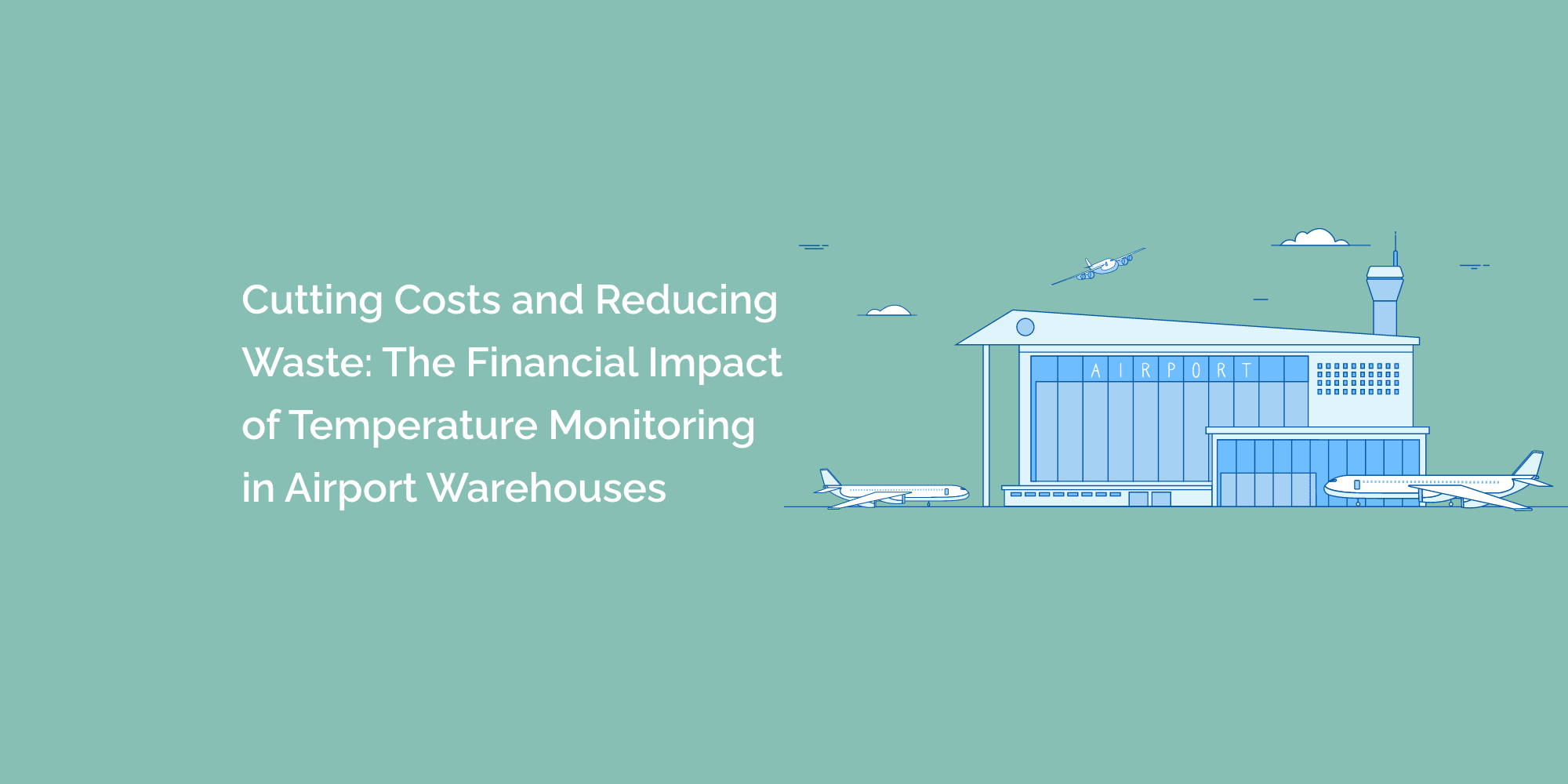Temperature monitoring plays a vital role in maintaining the quality and safety of goods stored in airport warehouses. It is especially critical for perishable items that require specific temperature conditions to prevent spoilage and maintain their integrity.
However, temperature fluctuations can lead to significant financial losses due to product damage, waste, and non-compliance with industry regulations.
In this blog, we will explore the financial impact of temperature monitoring in airport warehouses and how it can help cut costs and reduce waste.
- Minimizing Product Losses
One of the most significant financial benefits of temperature monitoring in airport warehouses is the minimization of product losses. Perishable goods, such as fresh produce, pharmaceuticals, and food items, are highly susceptible to temperature variations. If the temperature deviates from the desired range, it can lead to spoilage, reduced product quality, and potential health risks.
Real-time temperature monitoring systems enable warehouse managers to detect and address temperature deviations promptly. By taking immediate corrective actions, such as adjusting temperature settings or relocating affected products, warehouses can minimize product losses and preserve the value of perishable goods. This reduction in product losses directly translates into cost savings and improved profitability.
- Optimal Inventory Management
Accurate temperature monitoring in airport warehouses contributes to optimal inventory management. Real-time temperature data allows warehouse managers to allocate storage space based on temperature requirements. Perishable goods can be stored in appropriate zones with precise temperature control, ensuring optimal conditions for their preservation.
By optimizing inventory management, airport warehouses can reduce waste and avoid overstocking or understocking of perishable goods. Proper inventory management helps minimize carrying costs, prevent inventory obsolescence, and optimize the utilization of warehouse space. As a result, warehouse managers can cut costs associated with excess inventory and improve overall operational efficiency.
- Energy Efficiency and Cost Reduction
Temperature monitoring systems in airport warehouses can help optimize energy usage and reduce associated costs. Real-time temperature data provides insights into energy consumption patterns and enables warehouse managers to implement energy-saving measures.
For instance, by analyzing temperature trends and occupancy patterns, warehouses can adjust cooling and heating systems to run more efficiently during peak and non-peak hours. This optimization reduces energy consumption, resulting in cost savings on utility bills. Moreover, real-time monitoring systems can detect and notify personnel of any energy inefficiencies or equipment malfunctions, allowing for timely repairs and preventing unnecessary energy waste.
- Compliance with Regulatory Standards
Temperature monitoring in airport warehouses is crucial for compliance with industry regulations and quality standards. Many perishable goods, such as pharmaceuticals and food items, must be stored and transported within specific temperature ranges to maintain their safety and efficacy.
Failure to comply with temperature regulations can result in penalties, fines, and potential legal liabilities. By implementing robust temperature monitoring systems, airport warehouses can ensure compliance, avoid costly penalties, and protect their reputation in the industry. The financial impact of compliance goes beyond avoiding penalties—it helps maintain positive relationships with suppliers, customers, and regulatory agencies, leading to long-term business success.
- Enhanced Supply Chain Visibility
Real-time temperature monitoring in airport warehouses contributes to enhanced supply chain visibility. Temperature data collected throughout the supply chain can be shared with logistics partners, suppliers, and customers in real-time, ensuring transparency and accountability.
By providing stakeholders with access to temperature data, airport warehouses can build trust and strengthen relationships. Improved supply chain visibility enables proactive decision-making and collaboration, leading to cost efficiencies and waste reduction. With accurate temperature information, warehouses can optimize transportation routes, reduce lead times, and improve on-time deliveries. This, in turn, leads to enhanced customer satisfaction and increased business opportunities.
- Improved Customer Satisfaction and Retention
Temperature monitoring directly impacts customer satisfaction and retention. By ensuring the quality and integrity of perishable goods through precise temperature control, airport warehouses can meet and exceed customer expectations.
Customers rely on airport warehouses to handle their perishable goods with care and precision. Any compromise in temperature control can result in product damage or spoilage, leading to dissatisfied customers and potential loss of business. By investing in robust temperature monitoring systems, warehouses can deliver high-quality products consistently, enhance customer satisfaction, and foster long-term relationships with customers.
Conclusion
Temperature monitoring in airport warehouses has a significant financial impact, with benefits ranging from minimizing product losses to reducing waste, optimizing energy usage, ensuring regulatory compliance, enhancing supply chain visibility, and improving customer satisfaction. By implementing real-time temperature monitoring systems, airport warehouses can cut costs associated with product damage, waste, and penalties.
Moreover, temperature monitoring enables warehouses to optimize inventory management, reduce carrying costs, and improve operational efficiency. Energy-efficient practices further contribute to cost reduction. Compliance with regulatory standards safeguards the reputation and ensures long-term business success. Enhanced supply chain visibility and customer satisfaction strengthen relationships and open doors to new opportunities.
Investing in temperature monitoring systems is a strategic decision that can yield substantial financial returns for airport warehouses. It not only protects perishable goods but also drives profitability, operational efficiency, and customer loyalty. By prioritizing temperature control and embracing advanced monitoring solutions, airport warehouses can elevate their financial performance while delivering high-quality perishable goods to customers around the world.








